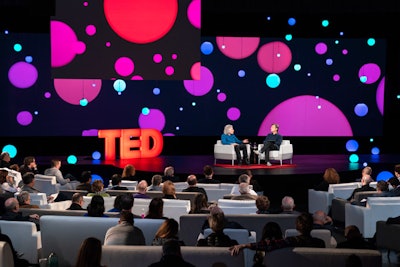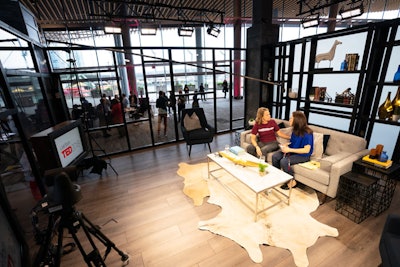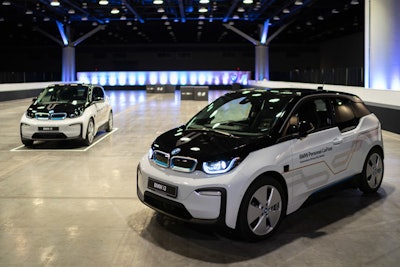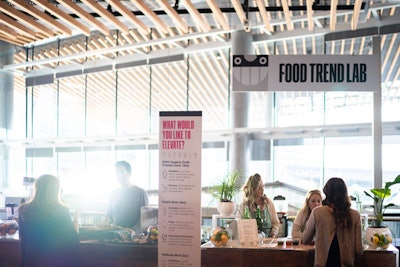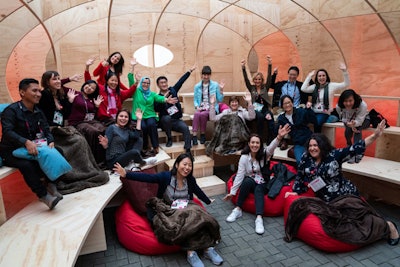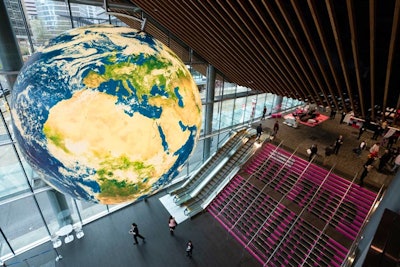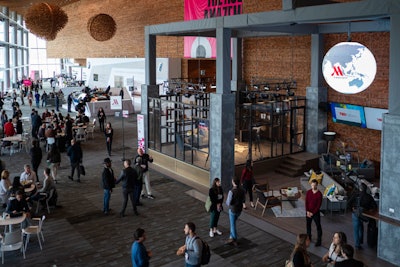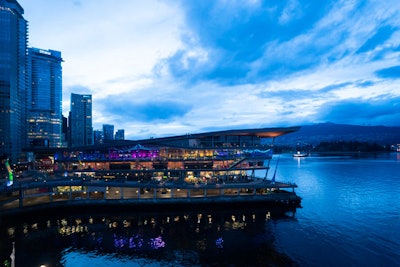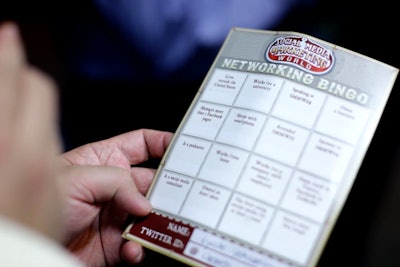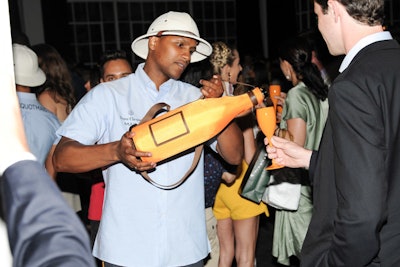
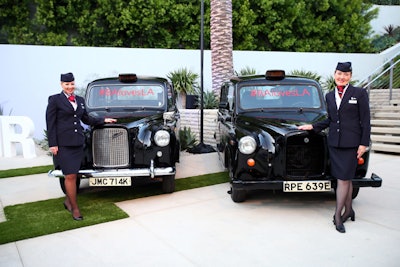
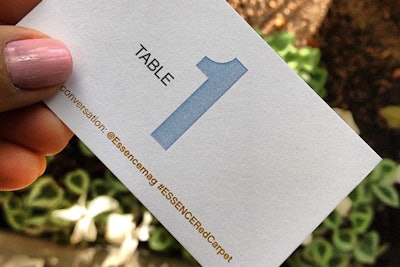
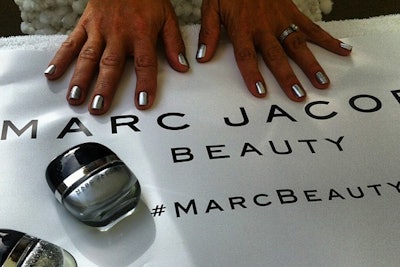
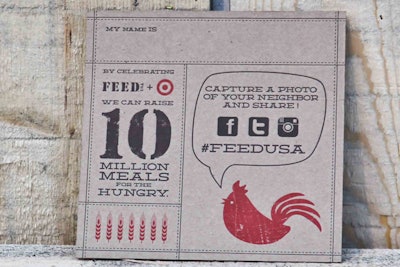
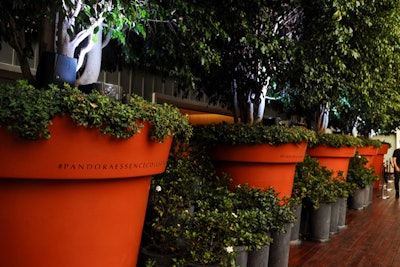
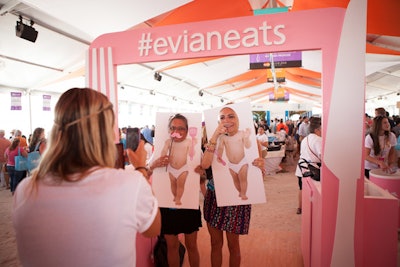
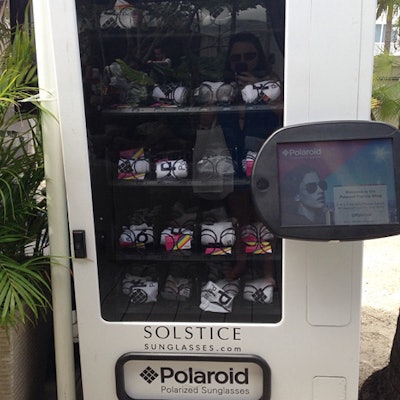
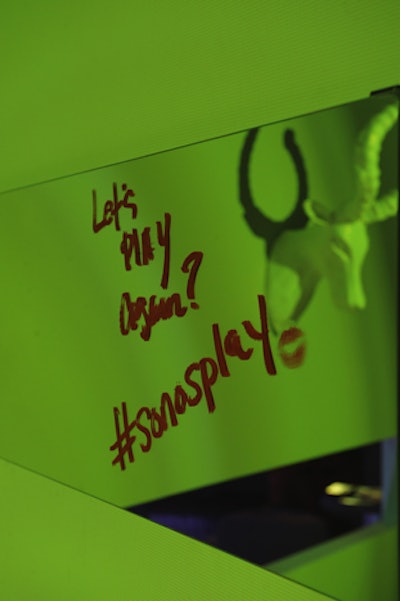
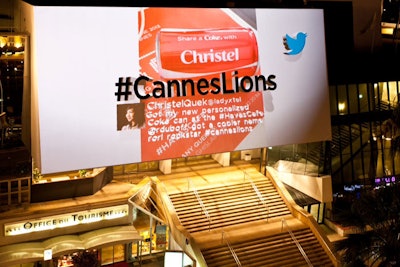
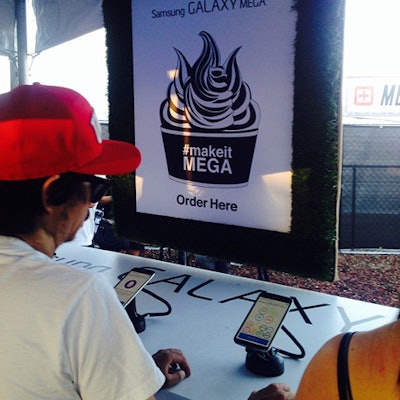
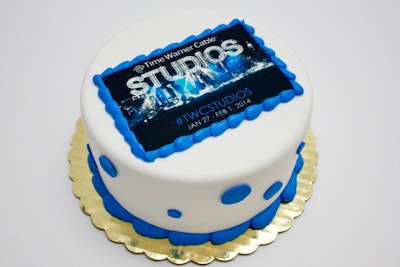
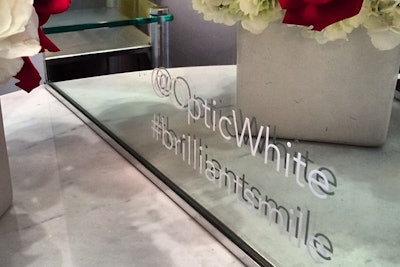
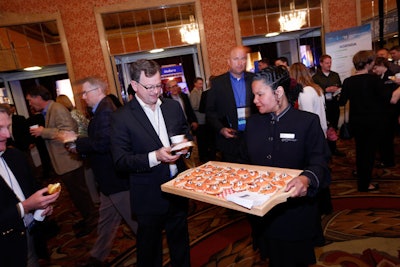
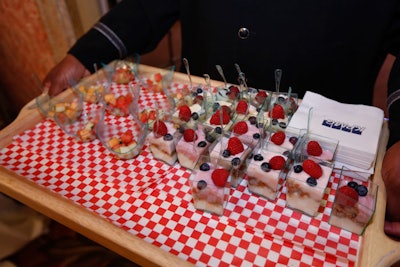
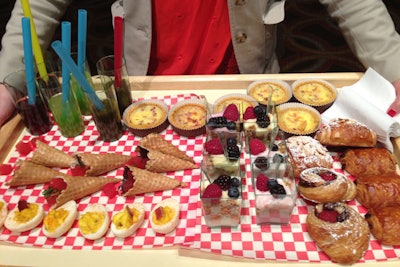
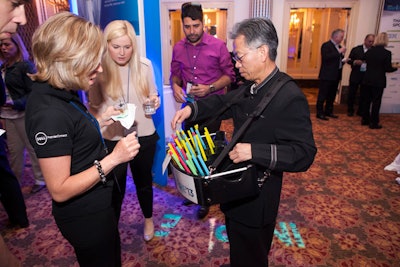
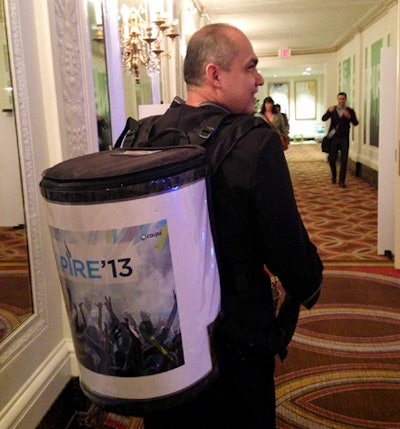

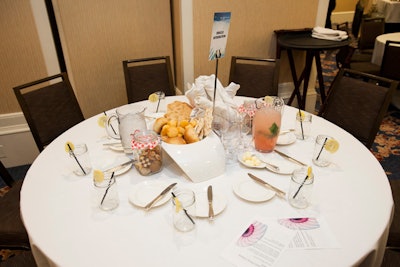
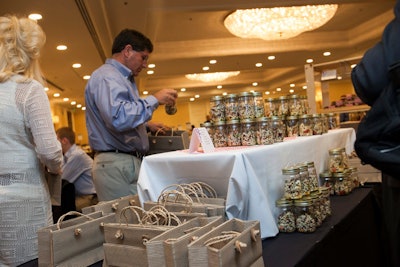
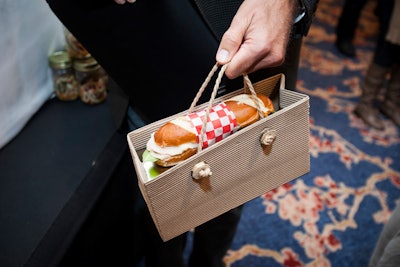
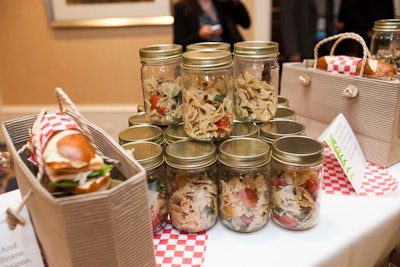
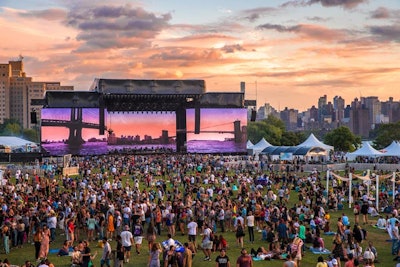
Similar to last year’s inaugural edition, the festival’s main stage broadcast a variety of imagery on three massive screens throughout the weekend. In between performances, the stage adhered to its New York theme with images of the city.
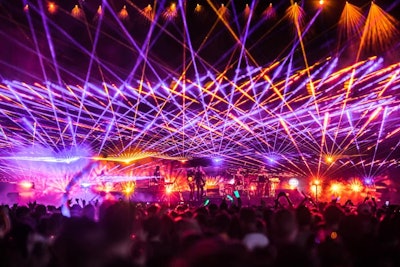
One of the most visual performances of the weekend came from psychedelic rock band Tame Impala, whose set featured a multicolor laser show.
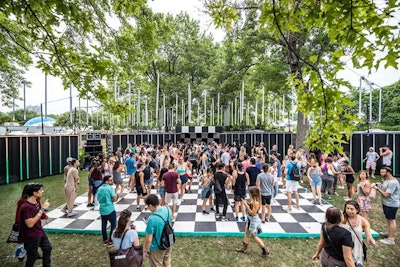
Along with two performance stages and a DJ dome, the festival provided attendees with a daylong, misted, open-air dance party that had continuous DJ sets. At night, hanging LED lights above the checkered dance floor turned different colors.
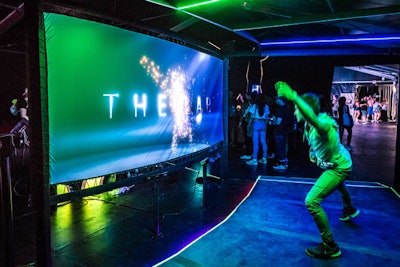
Sponsored by HP and curated by Meta.is, the Lab showcased new digital art exhibits including “Future Portrait,” a motion-capture art installation that welcomed attendees into the experience. Created by Brooklyn-based creative studio Prism, the exhibit translated a participants movement into animation using HP technology.
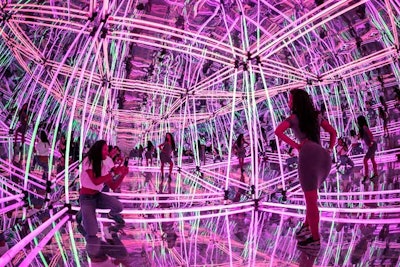
A photo booth at the beginning of the experience allowed attendees to take holographic-inspired shots in a box created with mirrors and neon lights that changed colors.
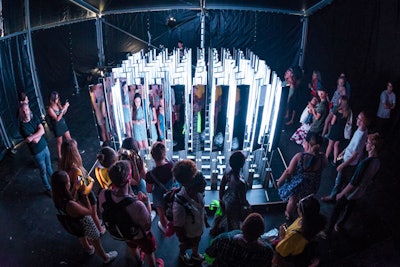
SoftLab, a New York-based design studio, created “Volume,” an interactive cube of responsive mirrors that redirected light and sound as a volume that reflected the excitement of attendees surrounding the cube.
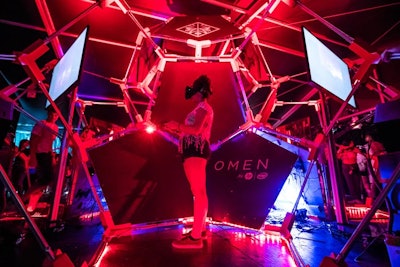
HP and Intel featured a room with a number of connected pods where attendees could play virtual-reality games.
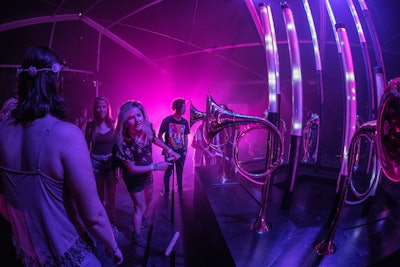
“Dream Machine” by Emilie Baltz invited people to play olfactory organs for a performance that combined smell with sound, light, and touch.
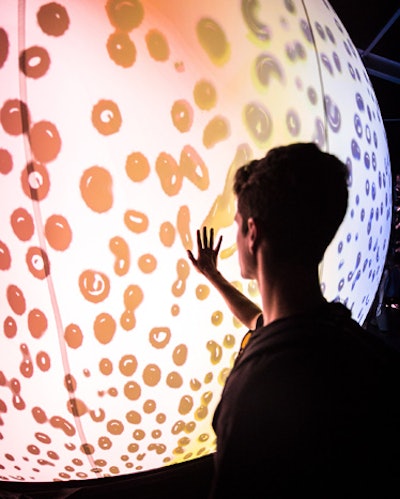
“Boolean Planet,” an interactive installation created by Future Wife with music by Max Cooper, invited attendees to play with a giant inflatable sphere. By touching the outside of the sphere, people could create sound and moving visuals.
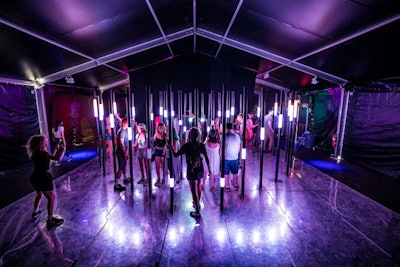
“Heartfelt,” a participatory installation created by artist and designer Ekene Ijeoma, invited participants to use their bodies as conductors by touching various poles. When each pole was touched, the installation created a heart with lights.
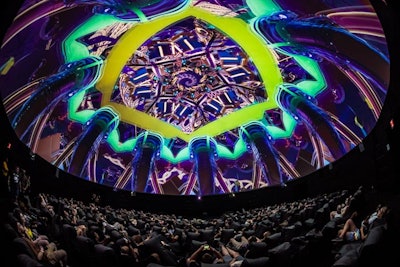
The Lab’s 90-foot dome held more than 200 festivalgoers at a time to experience a 360-degree show called “The Ark.” The show, which depicted a mythic journey of intergalactic survival in the search for a new home, was created by Brooklyn-based content design and experiential production company Dirt Empire.
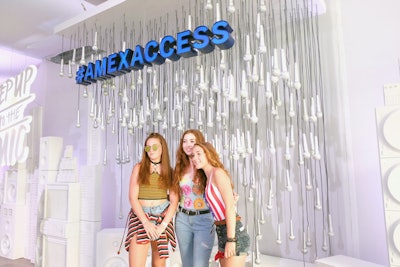
For its second year, American Express showcased its two-story experiential space, which included New York- and music-theme stations on the first floor for all festival attendees, as well as a branded viewing area and lounge on the second floor for card members, influencers, and media. The activation, which was produced by Momentum Worldwide, included a photo backdrop of hanging microphone replicas and the experience hashtag in blue.
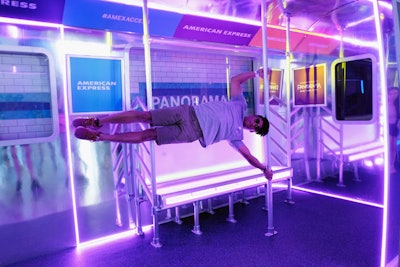
Another photo op offered a branded replica of a New York subway car.
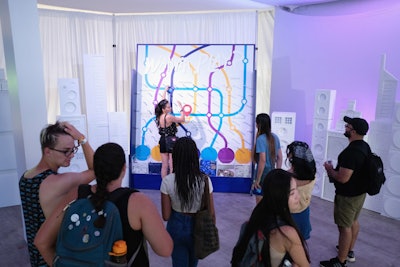
A Plinko-inspired game, which mimicked a subway map, gave attendees a chance to win prizes.
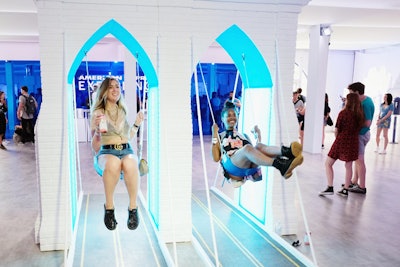
A third photo op involved a swing set that was designed to look like the Brooklyn Bridge.
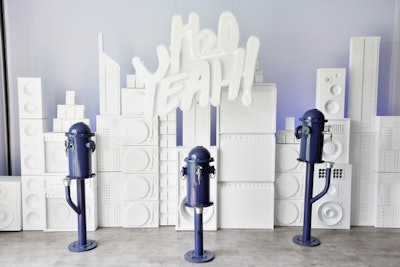
The activation’s music- and city-inspired design incorporated water refill stations that were created to look like fire hydrants.
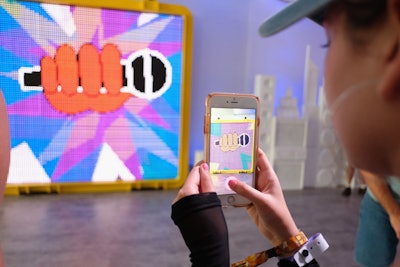
The animated interactive Mic Drop station invited attendees to dance and pose based on changing animations.
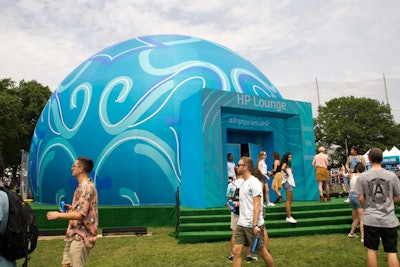
As domes were once again a big theme at this year’s festival, sponsor HP activated its own blue dome in the middle of the festival grounds.
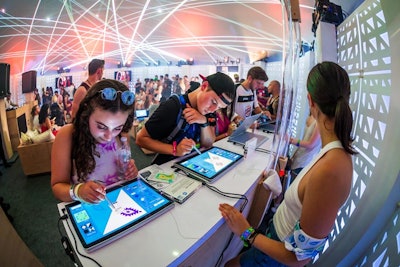
Inside the dome, guests were invited to participate in a number of immersive art activities. These included designing and printing custom scarfs using on the HP Pavilion X360 using Windows Ink, taking 120-degree light painting photos designed by artist Eric Park, dancing to manipulate virtual reality by artist Android Jones, and creating kaleidoscope patterns that were reflected in laser light shows on the dome.
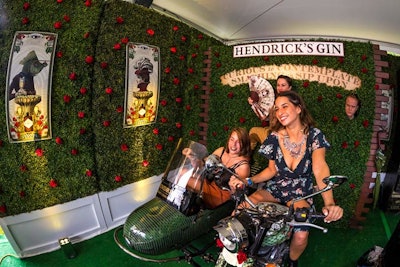
Momentum Worldwide also produced a Hendrick’s Gin activation that offered attendees gin cocktails and a photo booth that reflected the brand’s theatrical circus-inspired style, inviting festivalgoers to pose on a motorcycle in front of a backdrop of greenery and roses.

Returning sponsor Macy’s hosted a pool party-inspired activation, which include a blue ball pit that resembled a pool and colorful pool floats. The activation was produced by Macy's and LeadDog Marketing Group.
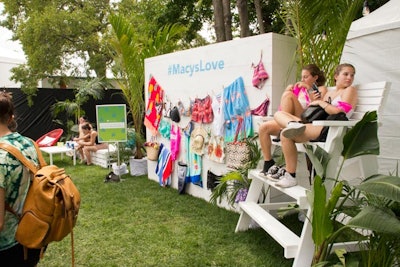
A branded wall displayed a curated "Press Play: Festival Fashion" product collection, while a lifeguard chair served as a seating option for attendees.
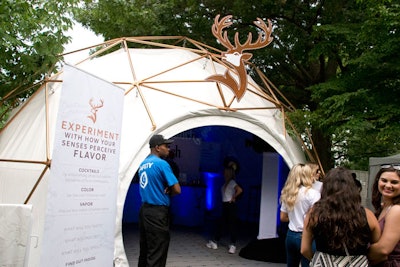
Whiskey brand Glenfiddich hosted a sensory experience in a dome that invited guests to sample unique cocktails, learn about how whiskey colors influence taste, and discover how whiskey texture influences smell.
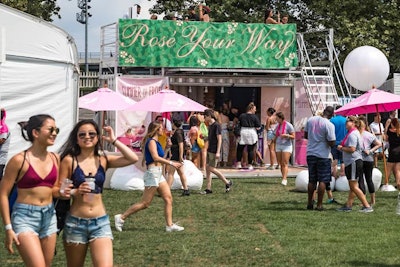
Barefoot Wine celebrated the popular summer wine rosé with a branded mini lounge, a bar that served drinks include “frosé,” and viewing deck.
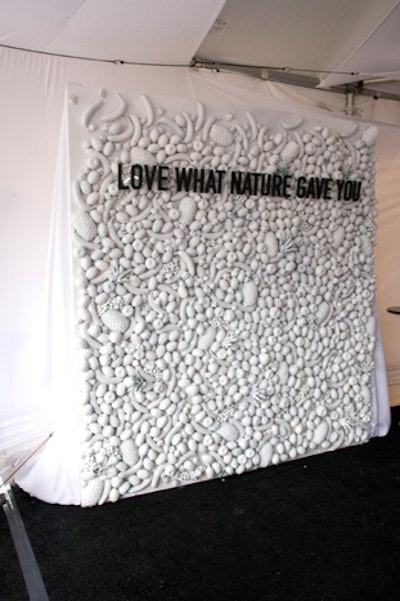
Antioxidant-infused beverage brand Bai returned as a festival sponsor, hosting a V.I.P. lounge that included a photo booth depicting a variety of fruit in the brand's black-and-white color scheme. Patrick J Clayton Productions designed the lounge, and Jordana Schrager created personalized polaroids for attendees.
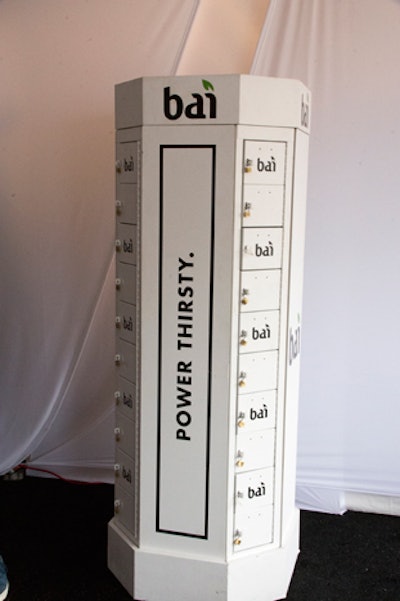
The lounge also invited guests to charge their phones at a branded phone-charging locker.
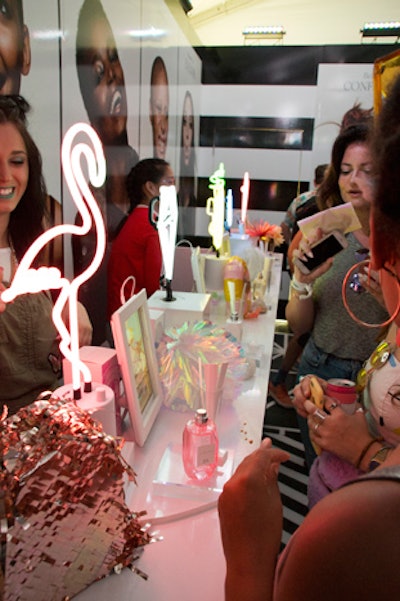
Beauty brand Sephora returned with its massive tent that featured a variety of stations, including beauty and braid bars and a mask lounge. Illuminated neon silhouettes added to the festival atmosphere. The experience was designed in-house.
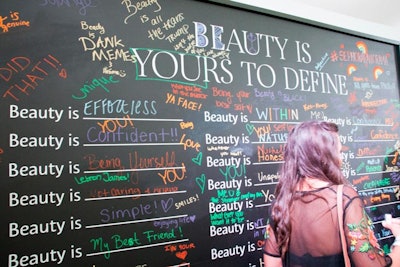
A giant, branded black marker board invited guests to write what beauty meant to them by filling in the blanks.
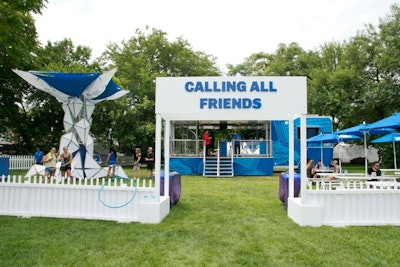
Mosaic produced Bud Light’s activation, which featured a shaded, branded lounge and a bar.

The “Gathering Tree,” which was designed using the brand’s blue and white colors, invited attendees to play a game with paper fortune tellers for a chance to win festival wearables and swag. Fortunes were placed in jars that were strung from the structure.
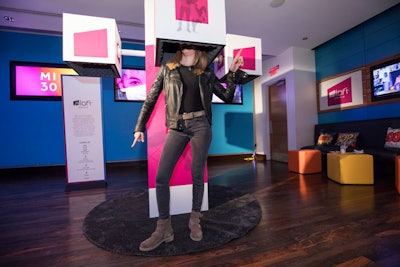
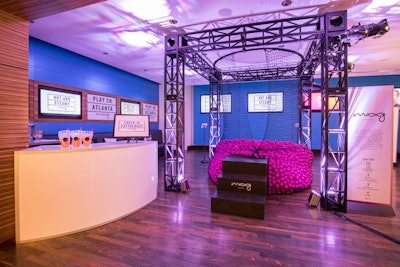
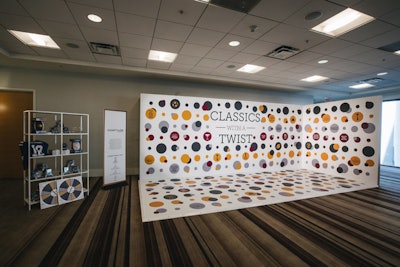
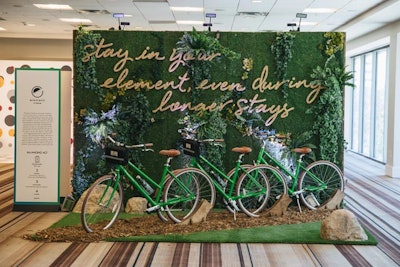

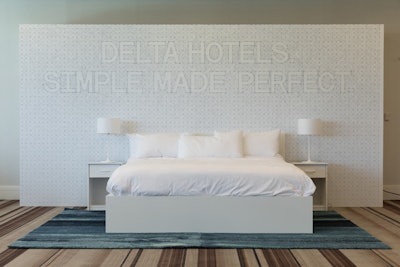
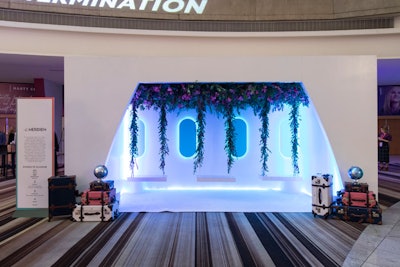
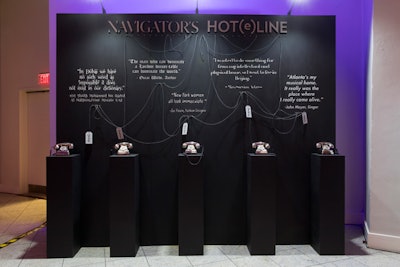

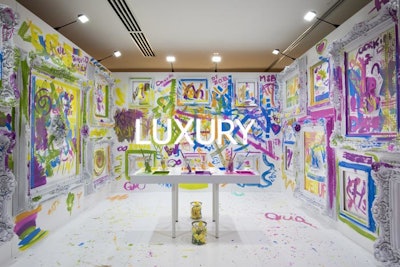
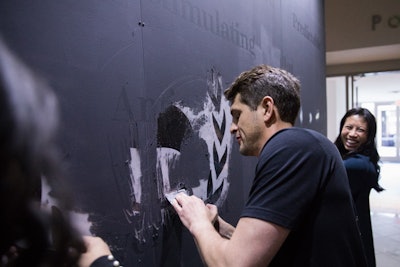
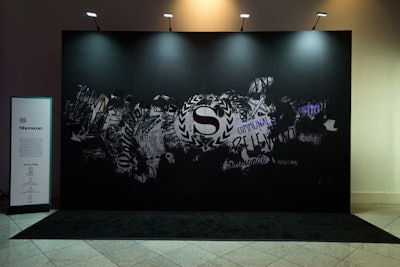
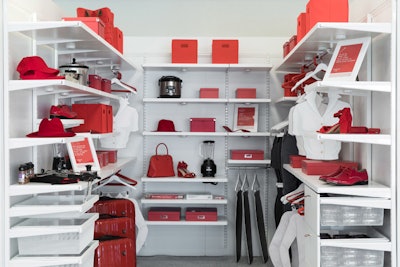
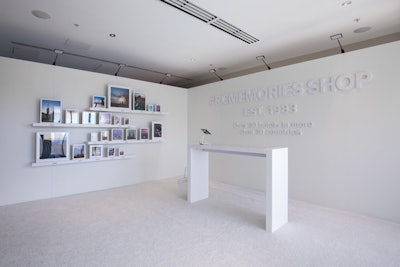
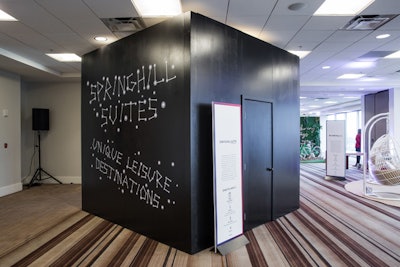
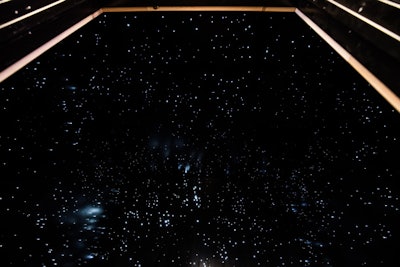
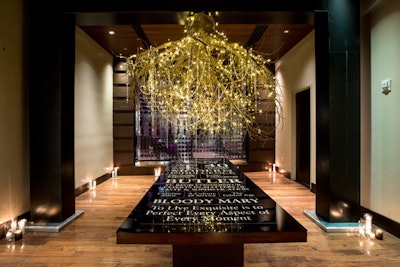
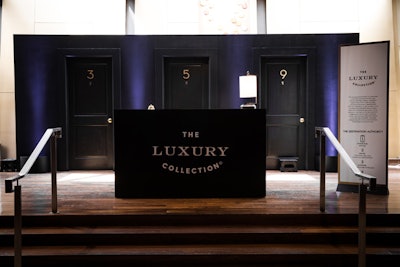
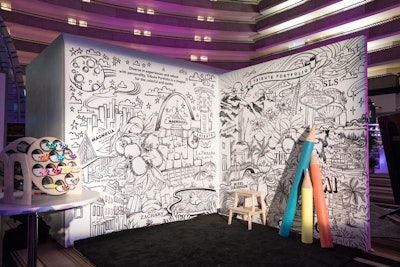
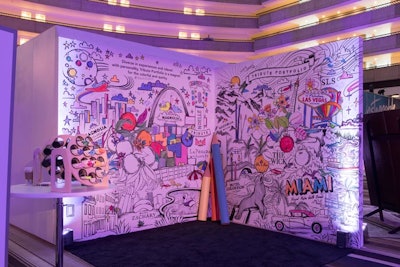
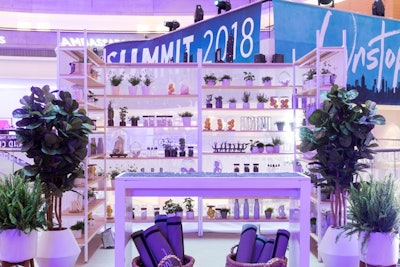

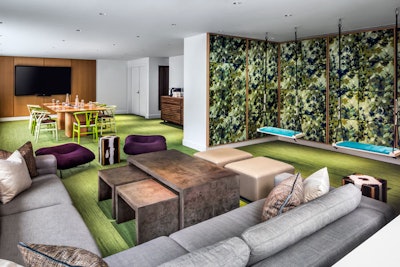
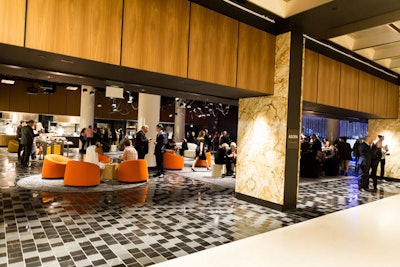
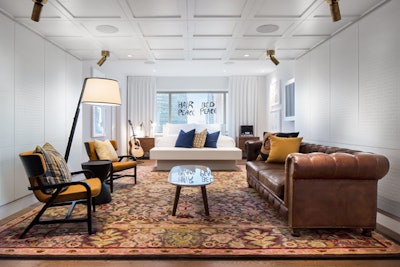
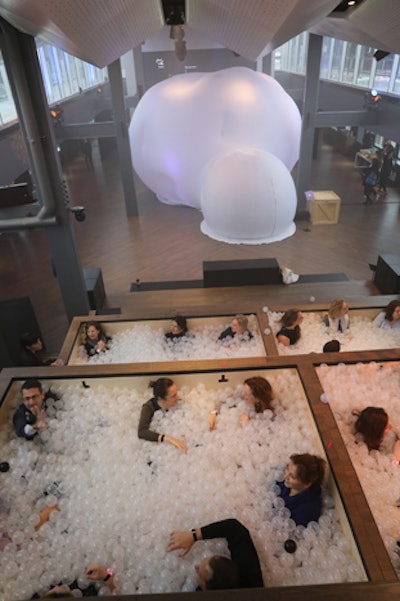
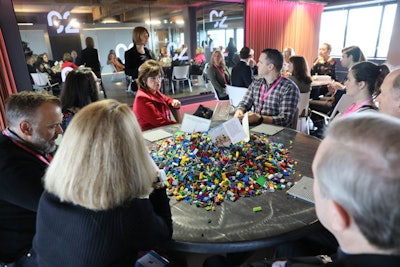
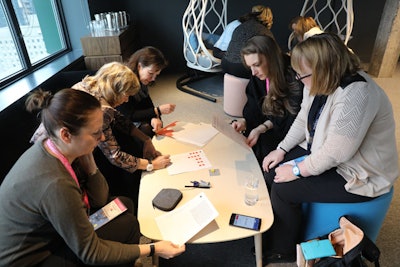
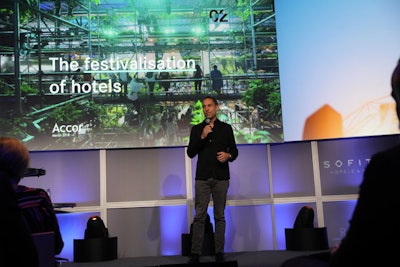
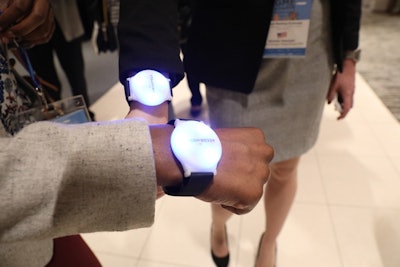
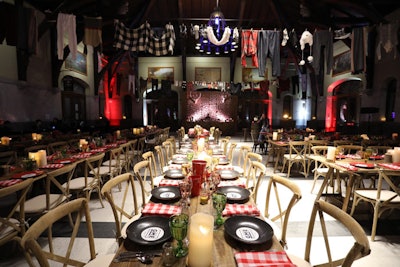
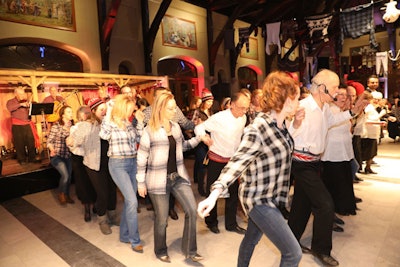
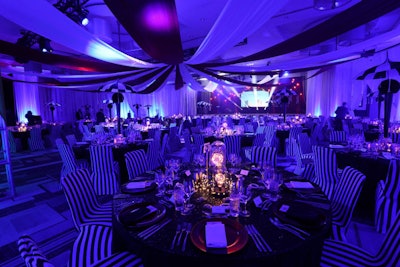
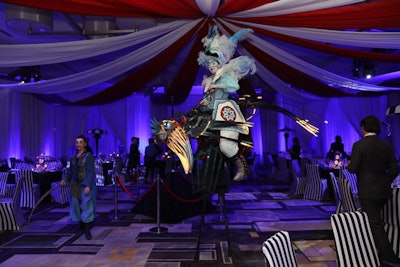
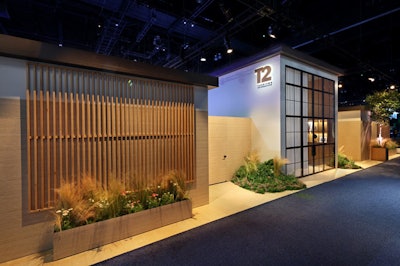
While Take-Two Interactive’s booth was solely for private meetings, the company still created a stylish, design-heavy space. Mirelle Phillips, director of experiential for Take-Two, worked with Tony Schubert of Event Eleven to design the 8,000-square-foot space, which was intended to serve as a calm retreat in the middle of the packed show floor. Studio Lily Kwong handed the landscaping throughout the space.
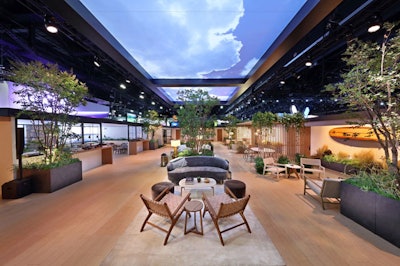
Inside, the one-story booth featured nine meeting rooms, a central courtyard, a cafe, a bar, a refreshment area, and a lobby. Screens displayed a blue sky overhead, and furniture from FormDecor offered comfortable, quiet spaces for meetings. Alpha & Omega Displays handled the fabrication, while 4 Wall designed the lighting and CBC Technical handled audio. Green Set provided the greenery throughout the space.
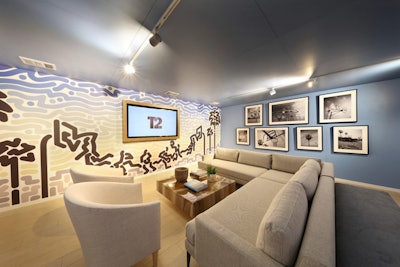
The booth stood out because, unlike other E3 booths, there were no demo kiosks or screens showing the publisher’s popular games, such as Red Dead Redemption 2 or WWE 2K. There was, however, one room devoted to Take-Two’s NBA2K. The stylish space had subtle basketball-theme artwork on the walls.
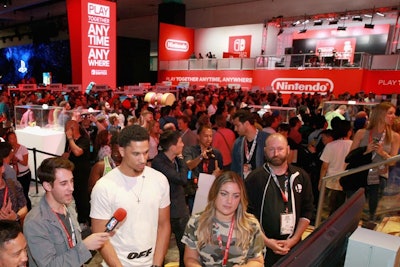
After transforming into a colorful, larger-than-life recreation of New Donk City for last year’s show, Nintendo’s booth was a bit more scaled down this year—but no-less visible. Themed around the new Super Smash Bros. Ultimate and Pokémon Let's Go! games, the bright red booth featured large-scale signage and massive televisions showing game trailers and clips. Memorabilia in glass cases were set up throughout the space.
